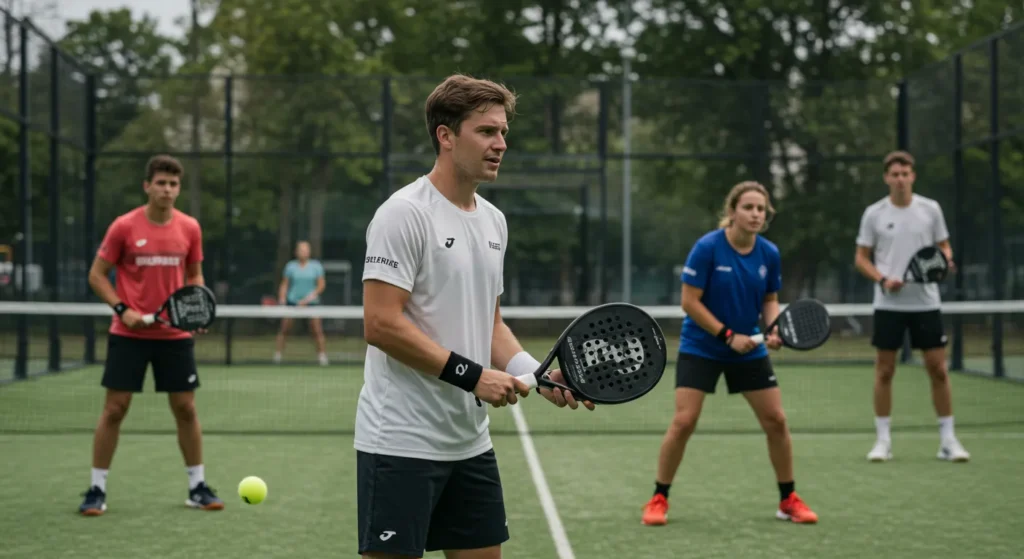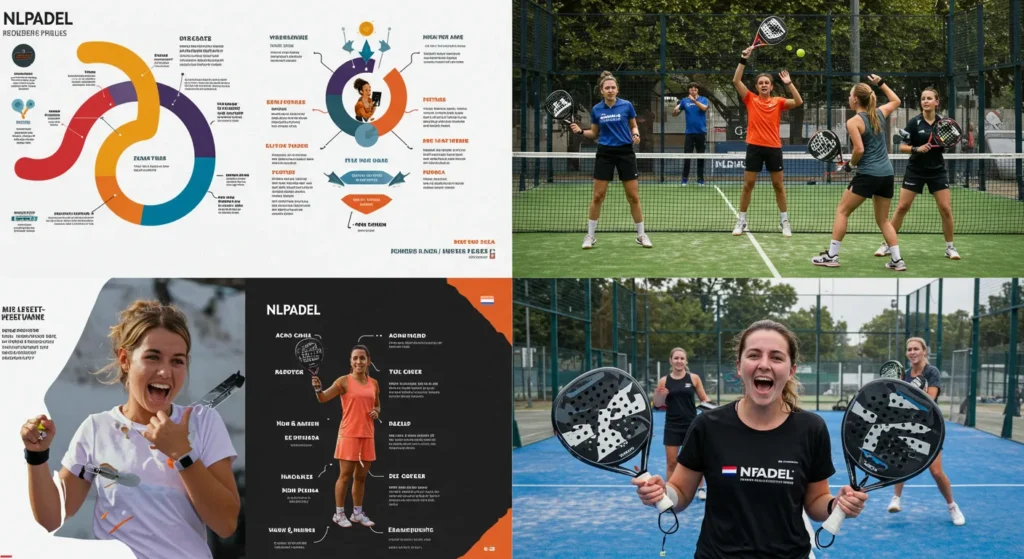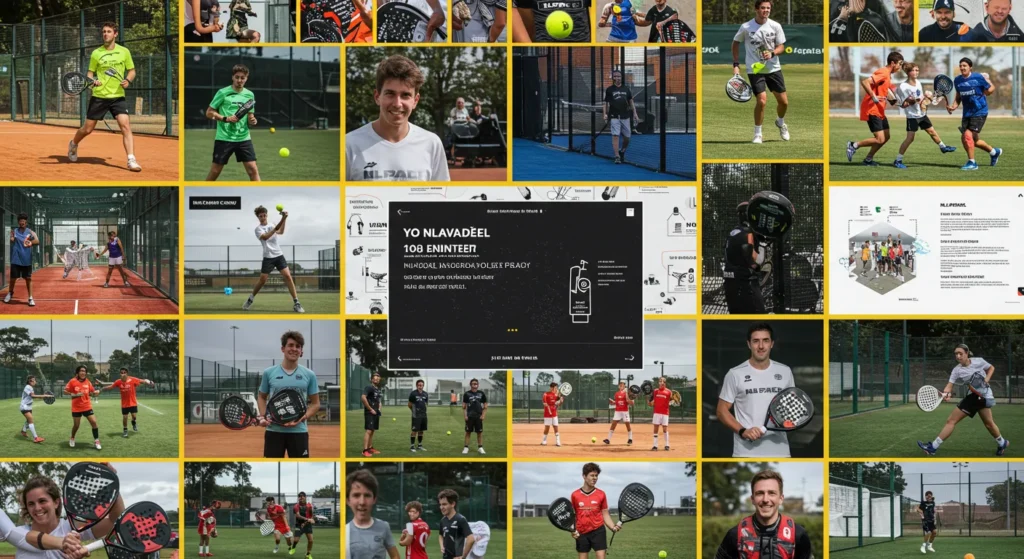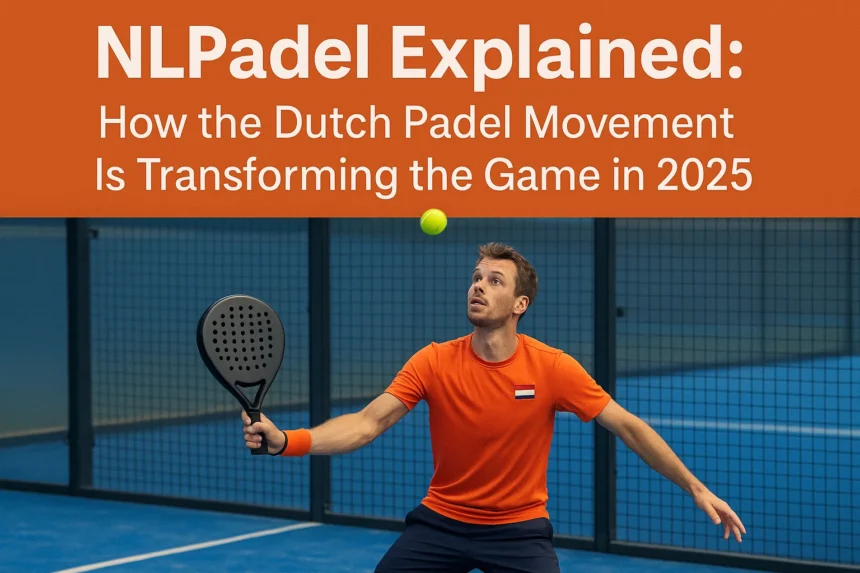Table of Contents
Have you ever wondered about the buzz surrounding padel, especially in the Netherlands? Nlpadel is at the heart of this exciting sport’s growth, blending organization, technology, and community to make it accessible and thrilling for everyone.
The Origins of a Fun Sport
Padel started as a mix between tennis and squash, played on a smaller court with walls. It first caught on in Spain, where the founders of a Dutch company got hooked back in 2003.
This introduction sparked interest, leading to the first courts being built in the Netherlands. Today, padel stands out for its social and fast-paced nature.
How the Sport Took Root

In the early 2010s, padel began popping up with just a handful of courts. People saw its potential because it uses less space than tennis and fits more players per area.
This efficiency helped clubs add padel without major changes. Soon, the need for a central body became clear to guide its expansion.
Forming a Central Authority
The Royal Dutch Lawn Tennis Association, known as KNLTB, teamed up with the NPB to create a unified group. This merger formed the official national organization for padel.
Nlpadel now handles development, rules, and promotion across the country. It operates under the KNLTB, ensuring everything runs smoothly.
Key Roles in Sport Development
This organization sets up national and regional competitions, like club events and youth tournaments. It also runs the National Rankings Tournaments, giving players a chance to shine.
Beyond that, it tracks player rankings through an open system. Players can access this via a member portal for events and stats.
Boosting Player Numbers
Over 90,000 people are registered padel players with the KNLTB. That’s a 200% jump in just three years, showing how quickly it’s growing.
Some estimates say more than 500,000 have tried it at least once. This mix of dedicated and casual players fuels the sport’s popularity.
Expanding Court Availability
Right now, the Netherlands has over 700 padel courts. Experts predict that number will top 1,000 by 2025.
These courts make the sport easy to reach for locals. Clubs benefit from support in planning and building new facilities.
Building Strong Communities
Nlpadel focuses on bringing people together through youth programs and school events. It also runs special leagues for women to encourage more participation.
Efforts include adaptive sports for those with disabilities. This inclusivity helps everyone feel welcome in the padel world.
- Youth engagement: Programs introduce kids to padel in schools, sparking early interest.
- Women’s initiatives: Targeted events and leagues build confidence and skills.
- Adaptive options: Exploring ways to make padel accessible for players with disabilities.
Coaching and Learning Pathways
Certification programs for coaches follow global standards. These ensure high-quality training for all levels.
Players and clubs get online resources for coaching. This helps improve skills and keeps the sport professional.
Digital Tools for Everyone
The organization offers an advanced online system for tournament sign-ups and real-time rankings. Players manage profiles and communicate easily.
It’s also looking into data tools and video analysis. These features make padel more modern and engaging.
- Automated registration: Sign up for events without hassle.
- Player profiles: Track personal progress and stats.
- Club communication: Centralized hubs for news and updates.
Revolutionizing Training Methods

Beyond organization, nlpadel introduces a fresh approach to performance using tech and psychology. This framework mixes neuro-linguistic programming with AI to boost players.
It aims to build mental strength and smart strategies. Coaches and athletes use it for better results on the court.
The Power of Mental Tools
Neuro-linguistic programming helps players picture wins and handle pressure. It teaches positive self-talk and learning from errors.
This pillar keeps athletes focused and resilient. Many find it transforms their mindset during games.
Data Insights for Better Play
AI and machine learning analyze match videos and sensor data. They provide reports on shots, movements, and opponents.
This leads to tailored tactics and improvements. Players make smarter choices based on real facts.
- Shot accuracy: Detailed breakdowns of speed, spin, and placement.
- Movement efficiency: Tracks how players cover the court.
- Opponent analysis: Predicts patterns to gain an edge.
Wearables in Action
Devices monitor heart rate, jumps, and reactions in real time. They connect to AI for instant feedback.
This helps prevent injuries by spotting early signs of strain. Athletes stay healthy and perform at their best.
Brain Science at Play
Neuroscience backs up training with ideas on brain changes and focus. It uses mirror neurons to improve skills through observation.
Managing mental load keeps players sharp. This science makes learning faster and more effective.
Smart Features Enhancing Games
The framework includes tools like smart rackets that measure shots. Performance analytics give insights into techniques.
AI coaching offers personalized tips. Real-time feedback lets players adjust on the spot.
- Smart racket tech: Captures speed, accuracy, and spin.
- Analytics dashboard: Visualizes data for easy understanding.
- AI guidance: Like having a pro coach in your pocket.
Optimizing Practice Sessions
AI tweaks training intensity and drills for each person. This maximizes skill growth and cuts injury risks.
Health metrics from wearables guide sessions. Players see steady progress and stay motivated.
Tech-Driven Gameplay
Simulations mimic real matches to sharpen decisions. This builds strategy without actual games.
Communities share data for group learning. It fosters a supportive network among players.
Real Stories of Success
Take Maria, who improved her precision using the framework. She won regional tournaments after gaining better control.
Javier built mental toughness and endurance. His story shows how nlpadel changes lives on and off the court.
- Maria’s journey: From casual player to champion through data insights.
- Javier’s gains: Overcame pressure with NLP techniques.
Constructing Quality Courts
Companies like Padel.nl handle building indoor and outdoor courts. They start with ground analysis and strong foundations.
Their ring foundation uses metal and concrete for durability. It supports the entire structure reliably.
Turf and Lighting Choices
Artificial grass is UV-resistant and comes in colors like blue for better ball visibility. Lines are integrated, and sand is added for play.
LED lights ensure even coverage and save energy. Options like swan-neck setups allow adjustments.
- Grass options: Blue, terracotta, green, or black.
- Lighting standards: Two per mast for uniform light.
Glass and Steel Builds
Courts use 12 mm laminated glass with polished edges. Holes for screws are prepared carefully.
Steel frames are galvanized and coated for protection. This creates a tough cage in any color.
What This Means for Players

With nlpadel leading, players get better access to courts and events. Tech tools make training personal and effective.
Communities grow stronger, welcoming all. This boosts enjoyment and skill levels.
Impacts on Clubs
Clubs receive help with membership and marketing. Digital platforms streamline operations.
More courts mean busier venues. Tech integration attracts tech-savvy members.
- Membership strategies: Tips to grow and retain players.
- Facility planning: Guidance on expansions.
Looking Ahead to More Growth
Projections show over 1,000 courts soon. Player numbers will keep rising.
Nlpadel drives this through innovation and inclusion. It sets the stage for padel’s future.
Final Thoughts
In summary, nlpadel has transformed padel in the Netherlands by merging organization with cutting-edge tech and community focus. Whether you’re a beginner or pro, it offers tools and support to thrive.
Why not grab a racket and join a local club? Experience the excitement and see how nlpadel can elevate your game.
FAQs
What is NLPadel?
NLPadel is the national organization under KNLTB promoting padel, and an AI/NLP framework enhancing player performance through tech and psychology.
How popular is padel in the Netherlands?
Over 90,000 registered players and 500,000 casual players enjoy padel, with 700+ courts and a 200% player increase in three years.
What does the NLPadel organization do?
It organizes competitions, tracks rankings, certifies coaches, supports clubs, and promotes inclusivity with digital tools for players.
What is the NLPadel performance framework?
It combines AI, NLP, wearables, and neuroscience to boost mental resilience, tactics, and training for padel players and coaches.
How does NLPadel use technology?
Smart rackets, AI analytics, and wearables track shots, health, and strategies, offering real-time feedback and personalized drills.










